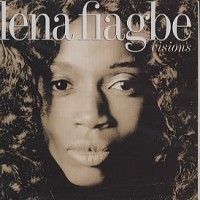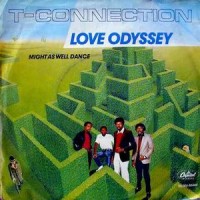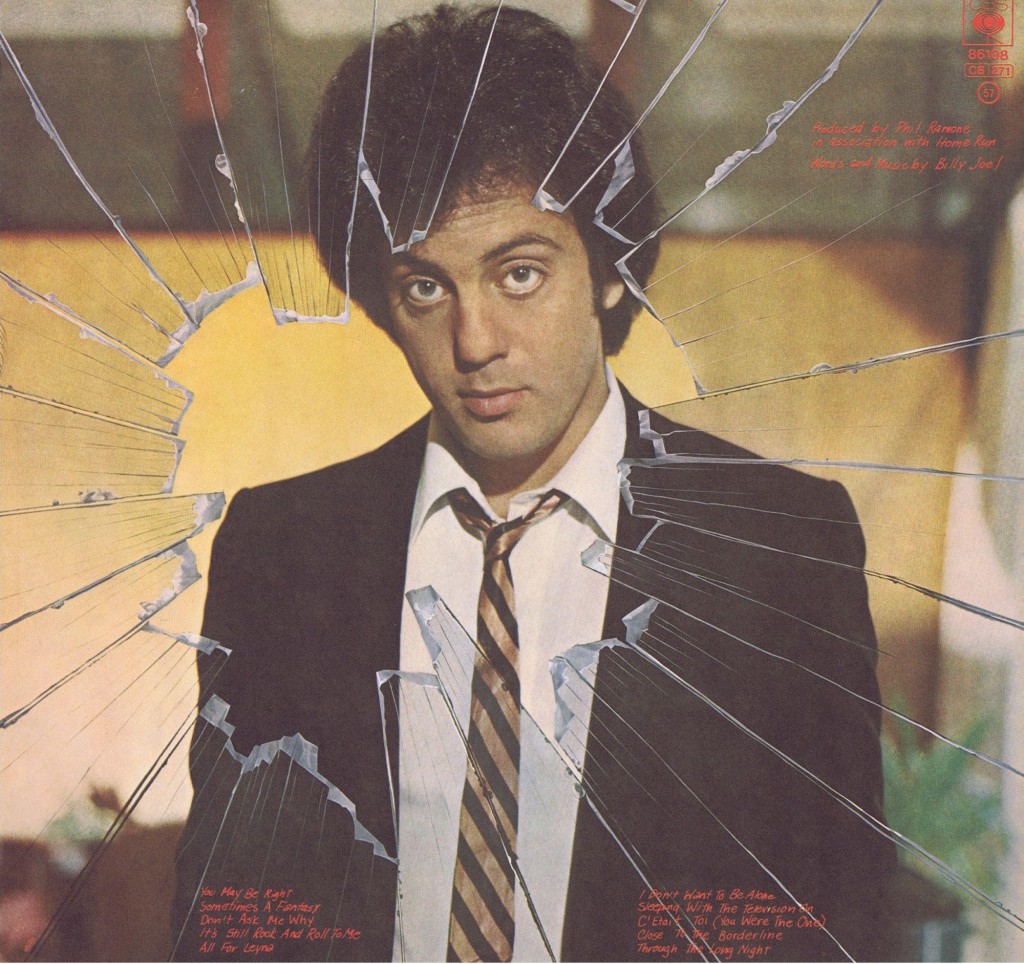There are different reasons why songs fail to become hits. In 1970s and 1980s, when artists generally released an album every year or 18 months, it was very common to simply run out of time to work each single with hit potential. Sometimes labels went with the wrong song. On other occasions, radio just didn’t respond for reasons that would differ depending on what department at a label you were speaking to and, even more, whether you were talking to the label, management, the artist, the songwriter ad infinitum. In the digital era, as millions become their own DJs who rely less and less on old media filters to hear new songs, there has been an endemic resistance at what’s left of terrestrial radio to music created by anyone over thirty. This is bad news for everyone who cares about music: ageism this pervasive, we all lose (just ask Rob Thomas and Gwen Stefani, two artists who quickly come to mind who deserve way more Top 40 love than they get.)
Another common explanation for the steep decline in pop songs is that there is a generalized antipathy toward too much music in the music: by this I mean too much melody or harmony—chords that are too sophisticated. Go back and listen to your favorite classic rock track. Compared to what’s on the radio today it sounds like musical theater. There are, of course, exceptions, but in general most pop music has a fraction of the melodic and harmonic complexity it once did. Don’t take my word for it, in Spain a study by Joan Serrà of the Artificial Intelligence Research Institute in Barcelona proved there is less musical variety in popular music in almost every measurable category. Similarly a recent study by Andrew Powell-Morse of SeatSmart looked at the lyrics of top songs across several genres over the past ten years, concluding that while songs ten years back had lyrics written at a third or fourth grade level, today’s hits are written at the level of Kindergarden readers! Yes, Stargayzers, that sound you hear is Cole Porter spinning in his grave.
Here are ten more songs that should have been Top-10 pop hits:
 1. Patty Smyth, “I Should Be Laughing” (1992)
1. Patty Smyth, “I Should Be Laughing” (1992)
“I Should Be Laughing” was the third single from former Scandal front-woman Patty Smyth’s eponymous 1992 solo album. The first single “Sometimes Love Just Ain’t Enough,” a country-tinged duet with (then paramour) Don Henley, went to number two on the pop chart and number one on the AC chart. The label tripped with the second single “No Mistakes,” but probably would have enjoyed another top ten hit if they’d gone with the Glen Burtnik co-write “I Should Be Laughing,” which was a much more like the album’s hit—also written by Burtnik and Smyth. Radio likes follow-ups that sound like the last hit, just ask Holland, Dozier, Holland.
“I Should Be Laughing” still sounds great. Sadly for her fans, the 1992 album was Smyth’s swansong. She subsequently married John McEnroe and had a family. Fun fact: then future music superstar Sheryl Crow sings back-up on the album.
Audio Player
2. Pink, “Good Old Days” (2012)
This bonus track was only available on certain versions of The Truth About Love CD. Co-written with Billy Mann and David Schuler, the song is a feel-good reminder to be where you are, not where you were, or where you’re going. This lyrical idea reminds me a bit of Carly Simon’s classic “Anticipation.” I’m a big Pink fan because I think she’s talented and manages to thumb her nose at the establishment while basically defining it—not as easy to do as it might seem.
With six single’s released, Pink’s The Truth About Love album had a surfeit of hit material, which doesn’t change the fact “Good Old Days” should have been a hit. Fun fact: I used it as part of the soundtrack to the slideshow at my mom’s 70th birthday party and everybody loved it, which is why Pink is truly the bad girl you can bring home to your mom.
Audio Player
 3. Tower of Power, “So Very Hard to Go” (1973/1999)
3. Tower of Power, “So Very Hard to Go” (1973/1999)
I’m not sure how I first learned about Tower of Power in general and “So Very Hard to Go” in particular. I think it may have been in the late-1980s from my friend Steve Greenberg (the record executive, not the “Funkytown” writer/producer guy). All I know is that from the first listen I was obsessed with everything about this song: its sinuous, soaring melody, its meaningful, economic lyrics and, of course, the amazing-as-always TOP horn section.
As much as I love the studio version from 1973, I prefer the live version from Soul Vaccination (1999). If anything, Lenny Williams’s lead vocal is only more of everything wonderful is one of my favorite underrated soul singers and his vocal here is nothing less than thrilling.
Audio Player
 4. Billy Joel, “Sleeping With the Television On” (1980)
4. Billy Joel, “Sleeping With the Television On” (1980)
Billy Joel’s Glass Houses was one of the great albums of 1980, with single after single dominating multiple radio formats throughout the year. “Sleeping With the Television On” was an album cut that easily could have been a single. Listening to it today, it sounds amazing, taut and beautifully crafted, with just a touch of the emerging “New Wave” keyboard sound that was fast becoming a radio staple. It stands as an enduring tribute to the amazing team Billy Joel was collaborating with at that time (certainly including the late, great producer Phil Ramone). It’s a testament to the strength of the record that Columbia didn’t even get to this ear worm.
When I hear “Sleeping With the Television On” it takes me right back to the summer of 1980: Timber Lake Camp, working as an assistant in the drama department and living with the waiters. It was a transformative time in my adolescence and this uptempo track makes it all seem like it was yesterday. Music has that ineffable quality.
A side note to those to young too understand why this song begins with a snippet of the “Battle Hymn of the Republic” followed by the sound of distortion: back in the day—really until the early 1980s—broadcast television actually went off the air, after, like 2:00 or 3:00 am on every station! Though it seems hard to imagine, they would play the patriotic song over the image of a flag and then that was it: snow (as we used to call it), or just the color bars (like on that Pet Shop Boys album cover), until the TV “came back on” for the morning shows. I know, hard to believe, right?
Audio Player
 5. Lena Fiagbe, “Gotta Get it Right” (1993)
5. Lena Fiagbe, “Gotta Get it Right” (1993)
English artist Fiagbe’s debut album Visions was released on U2’s Mother label in 1993 and spawned a series of moderately successful singles overseas. Throughout 1994 I enjoyed Fiagbe’s soulful pop record and waited for it to get some attention in the states. As so often happens, it wasn’t considered black enough for American R&B radio (this was the T.L.C., Usher, S.W.V. era) . As for why US pop radio didn’t bite, who knows. I certainly bit, and listening to “Gotta Get it Right” today brings back fond memories the soundtrack of my 1994, radio be damned.
I don’t know what happened to Lena. Maybe one of my English readers can fill me in. In the meantime, enjoy the unclassifiable and thoroughly infectious “Gotta Get it Right.”
Audio Player

 6. Blondie feat. Systema Solar, “Sugar on the Side” (2014)
6. Blondie feat. Systema Solar, “Sugar on the Side” (2014)
If this had been cut by Shakira instead of Deborah Harry, this would have been a top-10 hit. Like Donna Summer’s “Stamp Your Feet,” the only explanation for this song’s lack of radio play is ageism. I personally believe that if the song had been white labelled and sent to radio we might have actually have heard it on the radio and find it depressing that a song can no longer get played on its own merits. We used to root for heritage artists to be heard, now it is not even part of the dialogue, as radio scampers from one hookless, auto-tuned track to another.
“Sugar on the Side” had the benefit major TV exposure on shows like Project Runway and the Daily Show, but nowadays it just doesn’t matter. If you’re over thirty, radio won’t play you. There is no dialogue, no pushback, and great songs like this get forgotten. It would be fascinating to see if radio would bite if you put a picture of a sixteen-year-old kid on the same song.
Audio Player
 7. Fleetwood Mac, “Silver Springs” (1977)
7. Fleetwood Mac, “Silver Springs” (1977)
As most Stevie Nick’s fans well know, “Silver Springs” was written for Rumours in 1977 but left off the album (though it was included as the b-side of the “Go Your Own Way” single). According to lore (and common sense), this pleased Miss Nick’s none too much and contributed to growing tension in the band. Here is what Nicks said about the song:
“I wrote ‘Silver Springs’ about Lindsey. And we were in Maryland somewhere driving under a freeway sign that said Silver Spring, Maryland. And I loved the name … Silver Springs sounded like a pretty fabulous place to me. And, ‘You could be my silver springs…’, that’s just a whole symbolic thing of what you could have been to me.”
Rumours engineer and co-producer Richard Dashut called it the “best song that never made it to an album.” The song finally got its due on the 1997 reunion album The Dance, but I prefer the original 1977 version.
Audio Player
 8. Barbra Streisand, “When I Dream” (1984)
8. Barbra Streisand, “When I Dream” (1984)
Emotion was Streisand’s first pop record with a small army of producers as opposed to the single producer approach, and the results were uneven at best. Jim Steinman’s “Left in the Dark,” the album’s first single, was a commercial and artistic failure. Though the idea may have sounded cool in an A&R meeting, Steinman (who was coming off Bonnie Tyler’s “Total Eclipse of the Heart” and Air Supply’s “Making Love out of Nothing at All”) and Streisand were a truly bad match that resulted in Barbra literally getting lost in the bombast (and the mix). I remember playing the 45 in the college dorm room of my friend Richard Shepard for the first time and being thoroughly disappointed. You had to turn the 45 over to hear the b-side, “Here We Are at Last,” to hear Barbra Streisand.
Though she fared better with old friends Richard Perry (“Emotion”) and Kim Carnes (“Make No Mistake He’s Mine),” the album’s three stand-out moments were all produced by the late Earth, Wind & Fire leader Maurice White: “Heart Don’t Change My Mind” (written by Diane Warren and Robbie Buchanan); “Time Machine,” (written by White, Martin George Page, and Brian Fairweather); and “When I Dream” (written by Richard Baskin, Michel Colombier, and Kathy Wakefield).
Though to me the Maurice White/Streisand collaboration sounds like it shouldn’t have worked, in the end the three Maurice White tracks sound organic, fresh, and vibrant in a very appealing way. Columbia went with all the wrong singles and these tracks have been basically forgotten. I love “When I Dream.” Where “Left in the Dark” pummels you with a sledgehammer, “When I Dream,” beguiles and dances; it pulls you in. By the time Maurice White’s vocal takes the lead (in tandem with frequent Streisand studio co-horts Maxine and Julia Waters), you realize the team has succeeded in creating a rhythmic musical environment where Streisand sounds relaxed and comfortable.
I wonder what would have happened to the album if the label had had the guts to go with it as the lead single instead of “Left in the Dark” which sounds like a bad Sheena Easton single.
Audio Player
 9. T-Connection, “Love Odyssey (Love Shines Forever)” (1983)
9. T-Connection, “Love Odyssey (Love Shines Forever)” (1983)
Speaking of Earth, Wind & Fire, T-Connection’s “Love Odyssey (Love Shines Forever)” probably should win an award for being the song that most resembles EW&F but isn’t. The funk/disco band hailed from Nassau, the Bahamas and is probably best known for their 1977 dance hit “Do What You Wanna Do” and their 1978 multi-format hit “At Midnight”
“Love Odyssey (Love Shines Forever)” was a 1983 single from their Capitol LP The Game of Life and remains one of my favorite songs of the period. To crib a lyric from Stevie Wonder, I love every little thing about this song and record: the groove; the beautifully interwoven guitar and bass lines; the keyboard part that dances atop the verses and finally, the infectious ear worm of chorus. By the time the song modulates, with background vocals hypnotically swirling over gorgeous chords, you’ll have been transported to a better world, one where a simple pop song can inspire tremendous joy.
Audio Player
 10. Idina Menzel, “Where Do I Begin?” (2008)
10. Idina Menzel, “Where Do I Begin?” (2008)
What if this song had been recorded by Taylor Swift or Pink? Or what if this song had been recorded after Frozen catapulted Idina Menzel to the next rung of stardom? Everyone knows that ballads hardly exist anymore. They’re considered corny and dated; how sad for us all.
This Glen Ballard collaboration would have had an easier time in the 1990s or on a Carrie Underwood CD today. Top-40 (or pop, short for “popular”) used to be an umbrella word for a radio format that played everything from Dolly Parton to Deep Purple to the Doobie Brothers. Today, whichever computer divines what is or is not Top-40, has not only eviscerated whole swaths of genres that once helped defined Top-40 like rock, (sorry, Shinedown and Daughtry), country (sorry Carrie Underwood). Even worse, Top-40 rarely, if ever, plays ballads. Instead, we hear an auto-tuned swill of unmemorable rhythmic tracks. At no time in the rock era has Top-40 sounded so depressingly homogeneous and spiritually empty: the musical equivalent of a supermarket cookie with chemicals added to make it extra chewy.
It’s all very complicated in an utterly simple minded way. Anyway you cut it (pun intended), these are hard times for sentiment expressed without irony, and the world is a harder, less authentic place because of it. Idina Menzel has found a dependable route to success by circumventing radio, but can you imagine the scale of her achievements with radio support?
Audio Player
“Blondie” by Daniel Morgenstern, Artist Profile:
Daniel Morgenstern is an experienced illustrator, commercial artist and artist with a highly creative and original approach. Skilled in providing visual solutions in many different promotional media. Reliable and meticulous with the ability to produce high quality artwork to tight deadlines.





